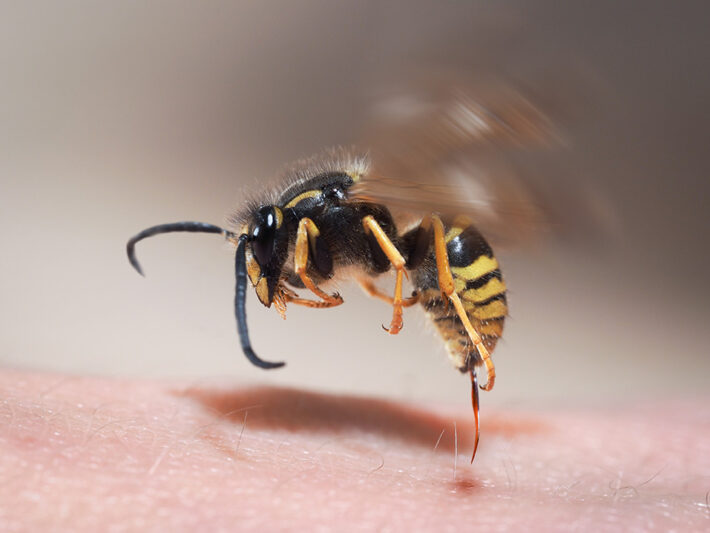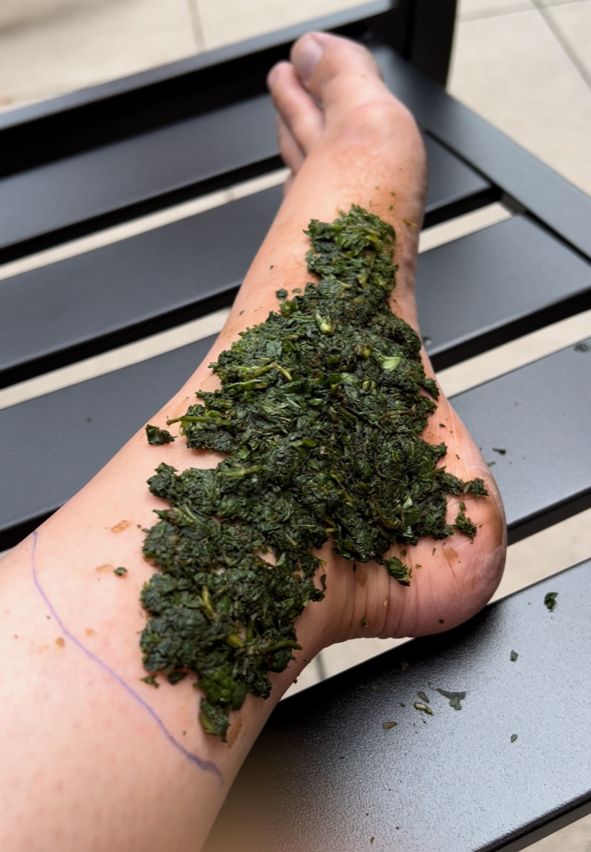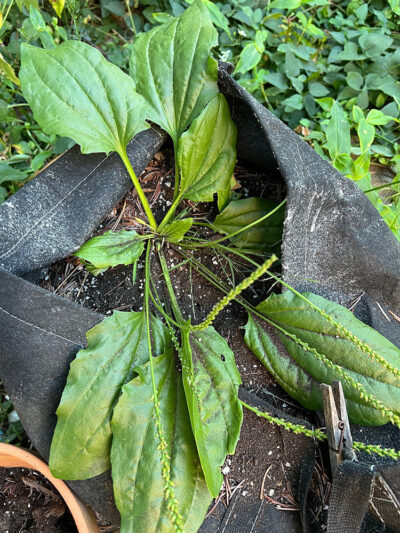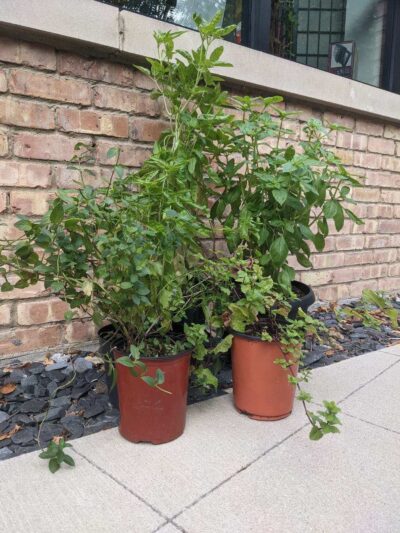
Ow!
Guest blog by Anne de Courtenay
It finally happened. After 45 years of being spared, they got me.
It was Tuesday, midday. I had just emerged from a Target in downtown Evanston where I’d stopped to pick up some very important foodstuffs: taco shells and Junior Mints. I was in my head, which is where I usually am, thinking about some recent transpersonal event, listening to the 1975’s latest drop (“Happiness,” off Being Funny in a Foreign Language) on noise-cancelling earbuds.
Right before the light turned green, “happiness” was exactly the opposite of what I felt. In between my sensible clog and my bare foot, just distal to my medial malleolus, I felt an electric shock of pain. It took me a moment to realize what was happening. I lifted up my ankle-grazing skirt and shook the shoe off my foot. Out flew some kind of Hymenoptera, spiraling into a municipal planter nearby.
I’d been stung.
My first thought: “I should put baking soda paste on this.”
The pain increased, shooting up my leg.
My next thought: “The hell if I’m walking all the way back to Target and looking for the damn baking soda.”
I limped several blocks back to work, wondering if I’d have to call someone to literally carry me back to the office. So this is what a sting feels like, eh? Extremely painful, kind of humiliating, definitely annoying.
I washed the sting, then sat down in the kitchen and applied ice immediately. There was no stinger, so I assumed a wasp was the culprit. A few students, clad in their uniforms for clinic sessions, came by to commiserate and swap sting stories. After about 20 minutes, I hopped back to my desk and added a few neat drops of lavender essential oil to the bite. It was very painful, and hot, but not swelling much. I had a shiatsu treatment that evening where the practitioner worked around the sting, bless her.
That night I took some ibuprofen and went to bed. No sweat. It’ll be fine tomorrow.
I was awakened around 4 am by the itching. The ITCHING. Yes there was pain, but now it was also maddeningly, writhing-in-the-sheets itchy. AND, it had swollen pretty dramatically.
I could barely put weight on the ankle and sat at work for the next two days with my whole leg unceremoniously propped up on my desk while I tapped away at emails and calendar updates.
Herbalist, Herb Thyself
By Friday, despite more ibuprofen and the occasional Benadryl, my whole ankle and foot had swollen to the point where I could no longer see my bones. There was a distinct demarcation where the skin and tissue were red and taut next to the normal pale color and supple texture. I was starting to wonder if I should go to urgent care.
A student showed up for his afternoon work-study shift. We’d fostered a friendship in the past two months, brought together by herbs (what else?) and the garden we jointly tend on the school patio. Unlike myself, who came to the study of medicinal herbs in my early 20s, this person was literally born in a forest to an herbalist, and grew up harvesting and preparing herbs.
He looked at my foot and commented on how much it had deteriorated since the initial sting – a phenomenon that was neither ideal nor normal.
“Did you try a poultice?” he asked.
What, me? An herbalist? Use herbs? Like a poultice? On myself? In the summer, when everything is abundantly growing? Pshaw. I only do that kind of thing for others.
It will surprise exactly zero people that we both considered plantain leaf first (Plantago major). It’s the go-to herb for insect bites and stings, not only because it’s somewhat antiseptic, drawing, cooling, and vulnerary, but because it is just plain ubiquitous. It’s also among the very first herbs that herbalists learn about for that reason – it’s everywhere. Herb teachers love to gross out their students by chewing up leaves and smearing the masticated paste on them. Yeah, it’s really a thing – that’s the traditional administration for this plant, and it makes sense, because very few people take hikes in mosquito-ridden areas with a blender and access to power. Molars are handy that way.
But see, in urban areas, plantain is likely to have been peed on (mostly by dogs, we hope), barfed on, or sprayed with who knows what. After acknowledging this fact, we thought, perhaps a soak? Compress?
Feeling nostalgic for my early days perhaps, I said, “Nope, I want a spit poultice, all the way.” I had never actually had quite such dramatic circumstances under which to test this most basic form of applied herbalism.
And so we did something unusual.
My friend harvested some mints and basil from our little patio garden and arranged them carefully on a table. Then we watched each other chew it all up in batches, generating as much saliva as possible, and slapped the green goo on my poor foot just where the swelling was the worst. We didn’t have enough to cover the whole affected area, which was OK because it provided a good control for the experiment.

My swollen, wasp-stung foot, covered with a freshly masticated poultice of basil and mint.
After the poultice dried enough to stick well, I got back to my desk and started taking hits of echinacea tincture every 15 minutes or so. One of echinacea’s many powers is as an anti-venom of sorts. I keep the tincture next to my computer at all times, but apparently I needed to suffer for three days and then commune with another herbalist to return to my senses and stop ignoring what I thought was just a meaningless bug bite.
About two hours later, the swelling under the areas where the poultice was applied was almost completely gone. We did a second round of the same herbs, this time outside on the patio, and grinned at each other with green-flecked teeth while he held acupoints on my leg and talked about his travels.
It sounds crazy, but I can’t remember the last time I had such a magical afternoon.
The next day I was able to walk normally. The day after that I could put shoes on. Today, at day nine, the swelling has completely resolved except for a couple of inches just inferior and proximal to the sting itself. This area remains red, itchy, and a bit taut or even lumpy compared to the rest of the foot. I’m considering doing an actual plantain poultice to see if, even so many days after the acute stage, it will have any effect. (The plantain in my backyard has volunteered itself in planters, so I’m not worried about how clean it is.)

Plantago major growing in a planter in my backyard
Intention? Frequency? Or Plant Power?
Culinary basil, spearmint and peppermint are not well written up for any medicinal action on venomous bites or swelling. Want to soothe your stomach? Help digestion? Freshen your breath? Maybe even repel insects? Yes, go for any of those Lamiaceae mentioned.
But for insect stings, you reach for plantain, calendula, lavender, perhaps yarrow and comfrey.
So why did our culinary herbs work?

Steven Universe, from the cartoon of the same name, can heal anything with his saliva.
First of all, it’s fairly well accepted that saliva has healing properties, and that fresh chlorophyll is anti-inflammatory.
I checked a few books in my herbal library, and a few point to mint (in particular, peppermint, Mentha piperita; spearmint is not commonly listed) as being helpful for itching.
In Herbal ABC’s: The Foundation of Herbal Medicine, Dr. Sharol Marie Tilgner says of peppermint (in this case, the essential oil):
“The menthol content gives peppermint the power to alleviate itchy skin. Peppermint is applied to insect bites, stings, poison oak, and itchy skin in general. I use it neat (without diluting) on mosquito bites… Peppermint can be used for any itchy skin generally. The essential oil can be mixed into a cream or fixed oil at 10 drops per ounce of fixed oil/cream… Additionally, a proper infusion of the dried herb can be made and a body part can be soaked in the cooled infusion or the cooled infusion can be made into a compress to be applied to the affected area. The key is to preserve the essential oil when making any type of application, as it is this part of the herb that has the anti-itch effect.”
I think this cooling and maybe even slightly counter-irritating rubefacient effect common to camphorous or menthol-containing herbs generally “confuses” the nerve endings that cause itching.
But what of sweet basil, Ocimum basilicum?
This one was harder to locate in my many books, as it’s regarded mainly as a culinary spice and takes a backseat medicinally to its adaptogenic cousin, holy basil (Ocimum sanctum). In general, it doesn’t get a listing in most materia medicae.
But lo and behold, in his Compleat Herbal, for which he wrote his “Epistle to the Reader” almost exactly 369 years ago today (Sept. 5, 1653), English herbalist Nicholas Culpeper writes that basil is
“.. an herb of Mars, and under the Scorpion, and perhaps therefore called Basilicon; and it is no marvel if it carry a kind of virulent quality with it. Being applied to the place bitten by venomous beasts, or stung by a wasp or hornet, it speedily draws the poison to it, (because) Every like draws his like.”
He then goes on to relay legends of basil spontaneously giving rise to “venomous beasts,” including scorpions, which may physically manifest inside the body of one who merely smells the herb.
While it’s clear Culpeper thought the superstition surrounding sweet basil was enough to make it something to be avoided, he did at least admit that it could help in the case of wasp stings, which it sure appears to have done for me. (I’ll be sure to report back if either myself or my friend – he a Scorpio, and I a Scorpio rising – wake up with spontaneously generated scorpions on our pillows.)

Group photo: some of the basils and mints used for poultice-making
Then, it turns out I didn’t even have to dust off my yellowed copy of the Compleat Herbal; the Internet is replete (repleat?) with home remedy advice citing basil as a specific for wasp and bee stings!
But-and-also… maybe there’s more to it than just plant chemistry. My fellow poultice-maker offered the following reflection the next day:
“My takeaway/projection is about relationality and ‘being there’ – that we used the plants that were there that we knew rather than trying to use the ‘correct’ herb(s) based on theoretical/abstract diagnosis and treatment.”
Theoretical/abstract assessment using energetics and discussing herbs we knew we were “supposed” to use were exactly the steps we took in the beginning. But for practical reasons and maybe even instinctual ones, we went to the plants we knew, with whom we’d been cultivating a relationship for months, helping them to grow, the ones we use to literally feed ourselves and our community.
I think there’s something, too, to be said about sharing the healing process with someone of like mind – in this case, someone knowledgeable and yet fairly laid back about the process because herbs are a familiar sort of “home” to us.
And, for me personally, being cared for in a way I don’t usually get to receive, from someone I trust, held its own healing charge all by itself. It’s a wonderful reminder, especially for healers of all stripes, that being receptive to healing from someone else’s generous hand can be a transformative and heart-opening experience — one that is essential for those on this path so focused on helping others.
At summer’s end is when wasps tend to get a bit more aggressive as their food sources dwindle. I hope this (mis)adventure can help you in a pinch.

Cool story. In the novel “The Hunger Games”, the author has the character “Rue” treating Katniss’ (the main character) wasp stings almost exactly like this – chewing the leaves from a bush and applying it to the area. I’ll have to remember this….